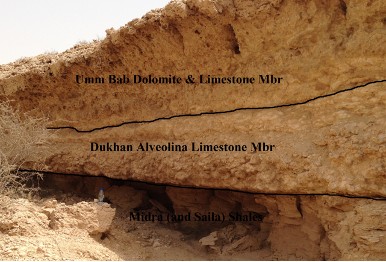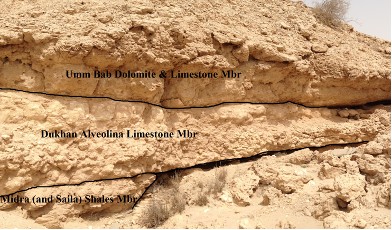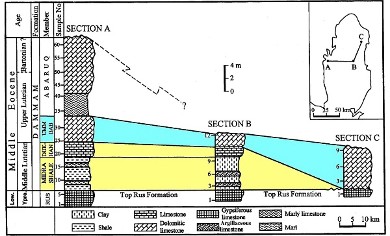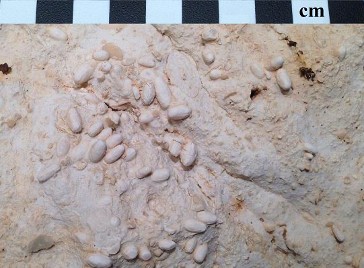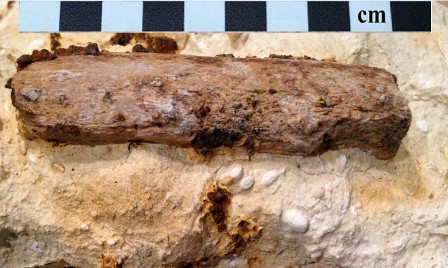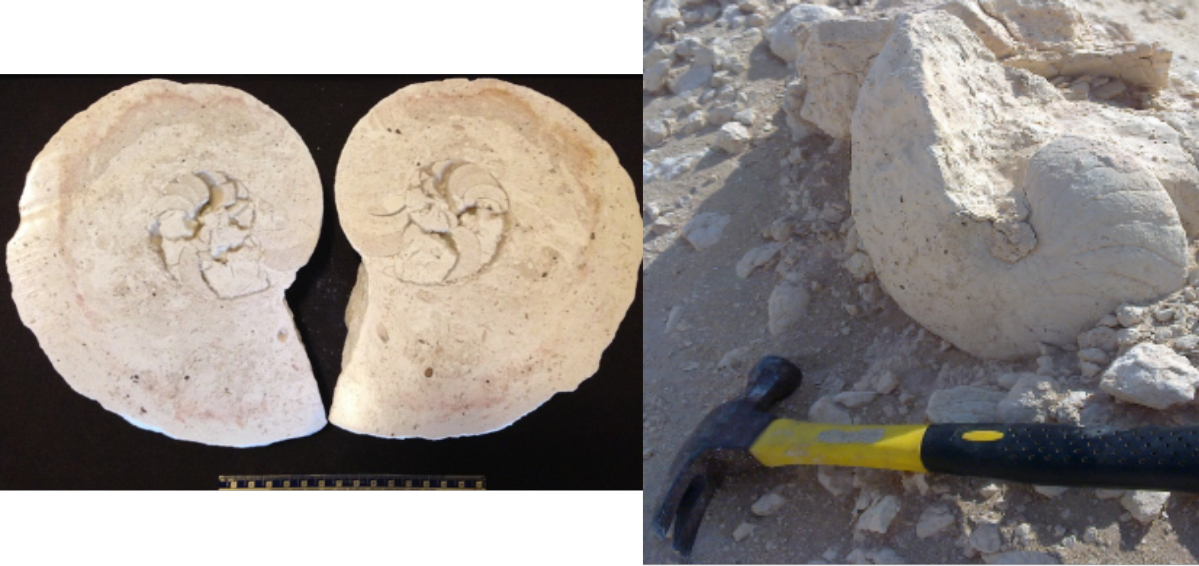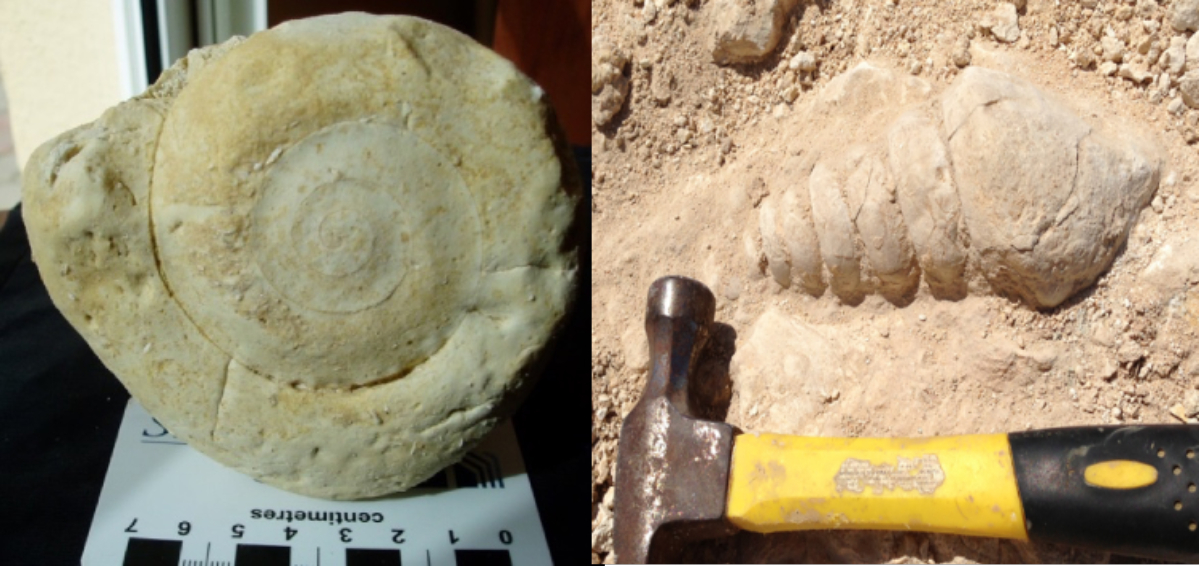Alveolina Bed Fm
Type Locality and Naming
See Dammam Fm
Synonym: Dukhan Alveoline Limestone Member; Alveolina Bed
Reference Section:
The Reference section is located as per Fig. 1 in (Midra Shale Member Fm), however the Dukhan Alveolina Limestone outcrops at several localities over the Dukhan anticline and in Southern Qatar. Good examples are seen in Figs. 1, 2 & 3.
[Figure 1: The Dukhan Alveolina limestone at locality Lat. 25°30'22.74"N, Long. 50°45'55.30"E]
[Figure 2: The Dukhan Alveolina Limestone Member at locality 25°29'51.82"N and 50°46'34.14"E. Use the water bottle as scale.]
[Figure 3: The Dukhan Alveolina Limestone Member at locality 25°29'51.23"N and 50°46'33.27"E.]
Lithology and Thickness
Composed of a bed of white to yellowish, more or less argillaceous, limestone which sometimes bifurcates. Its thickness rarely reaches one metre but it is an excellent marker because of the extreme abundance of Alveolina (Fig. 5). It can be observed throughout most of Qatar; the exception being the NE regions (Fig. 4).
[Figure 4: Correlation between the surface sections. A= Reference Section; B= Umm Slal Ali; C= Al Khor. Al-Saad (2005).]
Relationships and Distribution
Lower contact
It is intimately linked to the Midra Shale Member Fm, at the base.
Upper contact
Progressively merges with the marls at the base of the Umm Bab Dolomite and Limestone Member Fm, at the top.
Regional extent
GeoJSON
Fossils
The fauna includes rare Bryozoa, small Echinoderms, Molluscs (including Nautiloids) (Fig. 7), Gastropods (molds) (Fig. 8), rare fish remains and abundant large Foraminifera (Fig. 5). The present author also found in April 2015 a bone of a toothed-whale (Fig. 6).
[Figure 5: Abundance of Alveolina (Foraminifera) in the Dukhan Alveolina Limestone.]
[Figure 6: Bone from a Toothed-Whale. Note also the presence of Alveolina. (Identified by Dr. Iyad Zalmout)]
[Figure 7: Nautiloid (left & right) of the Deltoidonautilus species. LeBlanc (2019).]
[Figure 8: Gastropods. Left = Conus; Right = Campanile sp.]
Age
Depositional setting
Additional Information
https://doi.org/10.37819/biosis.001.04.0134 (or via https://sites.google.com/site/leblancjacques)

